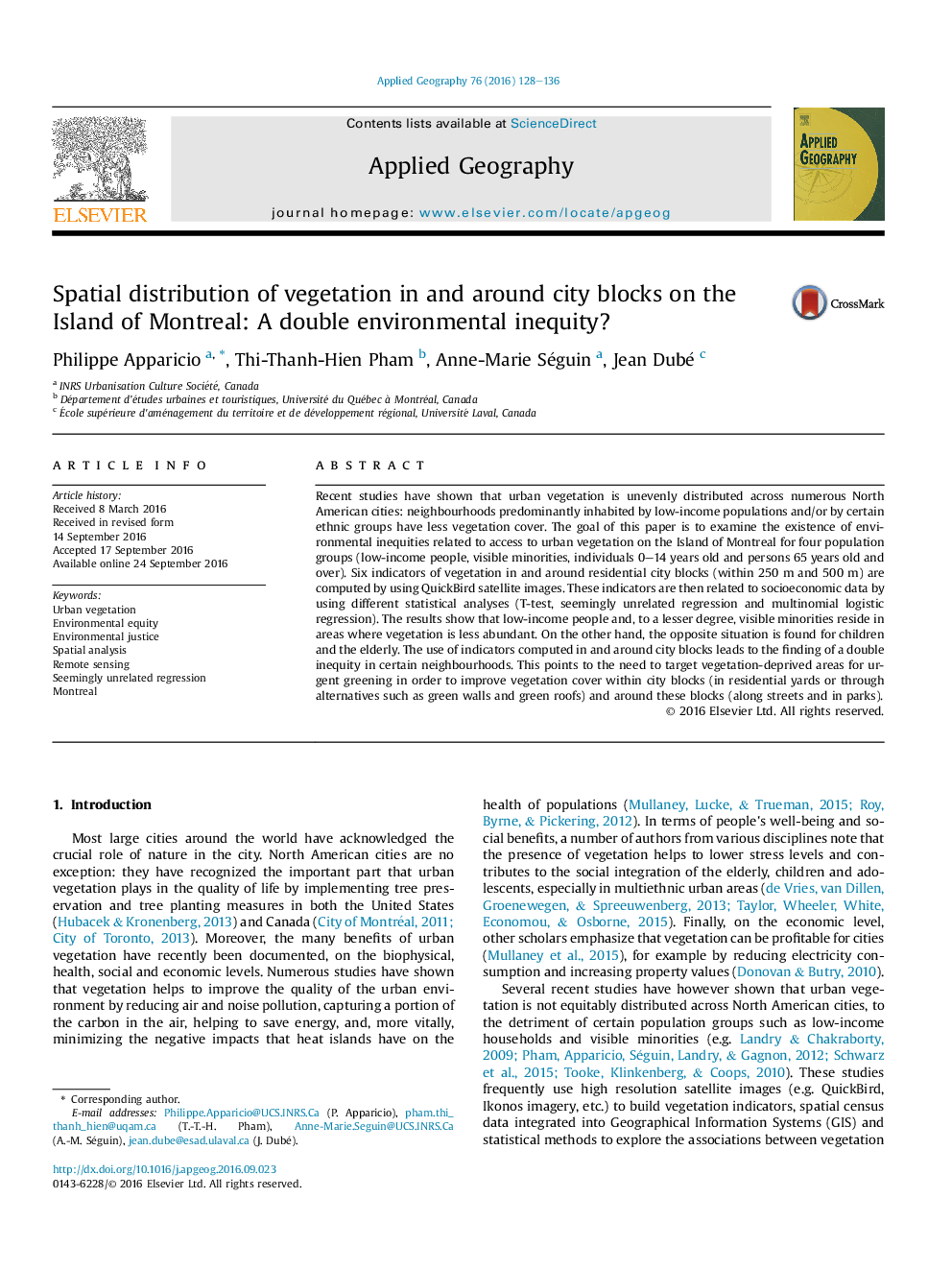| کد مقاله | کد نشریه | سال انتشار | مقاله انگلیسی | نسخه تمام متن |
|---|---|---|---|---|
| 6458542 | 1421041 | 2016 | 9 صفحه PDF | دانلود رایگان |
- There is significantly less vegetation cover in and around city blocks for low-income people and, to a lesser extent, for visible minorities, than for the rest of the population.
- The regression results suggest a double inequity for these two groups.
- The situation is quite favourable for children and seniors.
- Vegetation measurements in and around residential city blocks suggest the need for more targeted greening interventions.
Recent studies have shown that urban vegetation is unevenly distributed across numerous North American cities: neighbourhoods predominantly inhabited by low-income populations and/or by certain ethnic groups have less vegetation cover. The goal of this paper is to examine the existence of environmental inequities related to access to urban vegetation on the Island of Montreal for four population groups (low-income people, visible minorities, individuals 0-14 years old and persons 65 years old and over). Six indicators of vegetation in and around residential city blocks (within 250Â m and 500Â m) are computed by using QuickBird satellite images. These indicators are then related to socioeconomic data by using different statistical analyses (T-test, seemingly unrelated regression and multinomial logistic regression). The results show that low-income people and, to a lesser degree, visible minorities reside in areas where vegetation is less abundant. On the other hand, the opposite situation is found for children and the elderly. The use of indicators computed in and around city blocks leads to the finding of a double inequity in certain neighbourhoods. This points to the need to target vegetation-deprived areas for urgent greening in order to improve vegetation cover within city blocks (in residential yards or through alternatives such as green walls and green roofs) and around these blocks (along streets and in parks).
Journal: Applied Geography - Volume 76, November 2016, Pages 128-136
